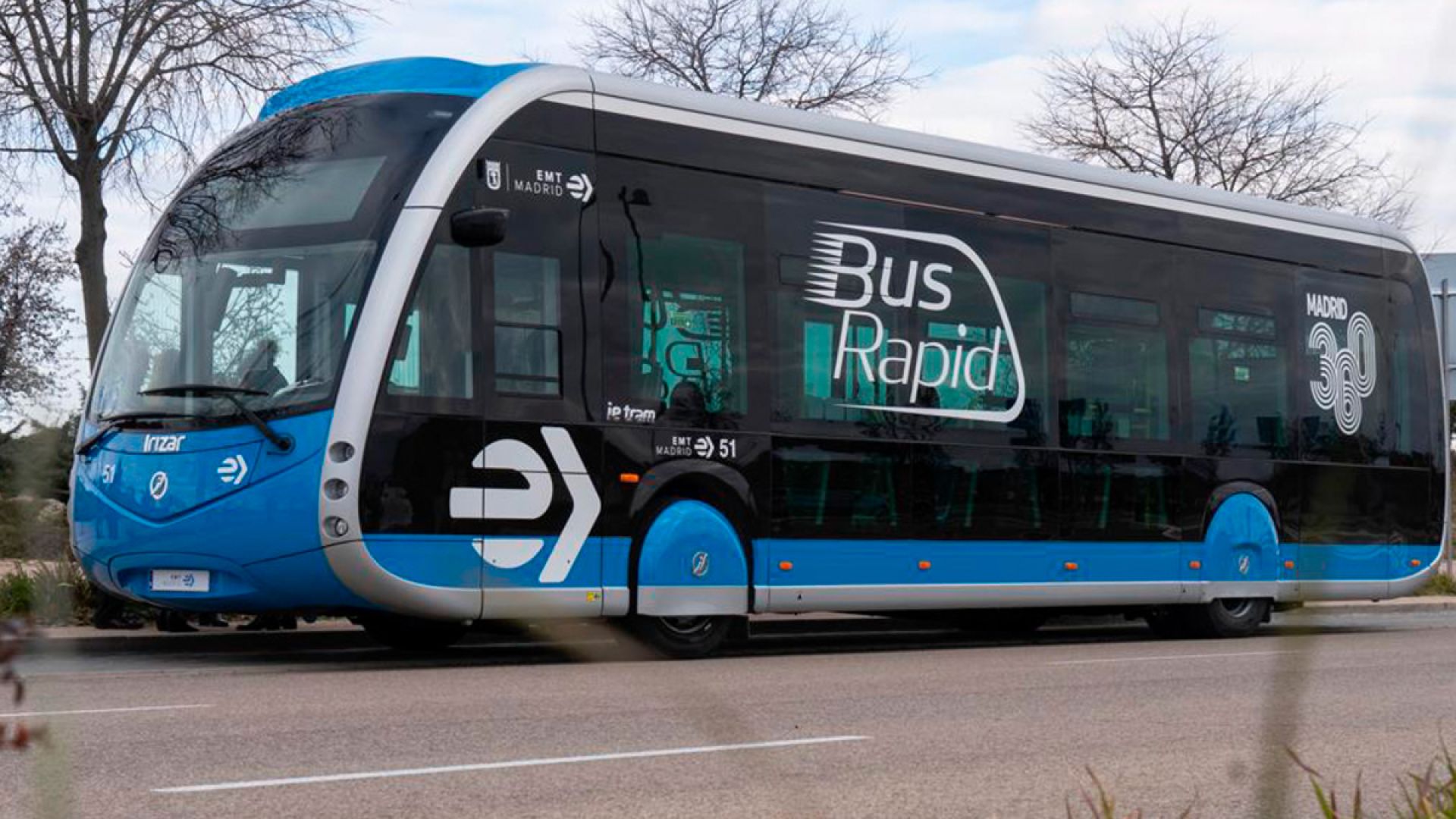
The city of Madrid presents the Irizar e-mobility ie trams that will operate on the city's first electric BRT line
Aduna, 8 February 2023
- There will be a total of ten 100% electric Irizar ie tram buses that can transport up to 100 passengers each and that will have an 8 to 12 minute frequency.
- Their minimalist, modern design that is similar to a tram makes the vehicles easy to distinguish from the rest of the municipal fleet.
- The line has a total length of 31 kilometres, 19 of which have a bus-only lane and, for the first time there will be traffic signal pre-emption at 68 intersections.
The first Bus Rapid that will start running on the city's streets in May was presented in Madrid this Tuesday. It will be the first high-capacity rapid electric bus line in Madrid. The system will connect the neighbourhoods of Valdebebas and Sanchinarro with the Ramón y Cajal hospital using a bus-only lane and, for the first time, it will have signal pre-emption.
The presentation ceremony was held on Avenida de las Fuerzas Armadas in Valdebebas in a section of the road where work is already under way to implement the BRT, which stands for Bus Rapid Transit. The line will have a fleet of ten Irizar ie tram buses.
With the addition of these 10 buses, the EMT of Madrid will have a total of 175 zero-emissions Irizar buses in its fleet.
Irizar ie tram - High capacity and comfort with the attributes of a tram
The first rapid high capacity line in Madrid will have ten completely electric buses, which will be 12 metre long Irizar ie tram vehicles. The vehicles combine the flexibility of an urban bus with the high capacity and ease of moving around inside of a tram. With a modern, minimalist design, chrome edging and large glazed areas on the sides, it can be easily distinguished from the rest of the municipal fleet.
Instead of rear view mirrors, the vehicle is equipped with cameras that show images on two screens on both sides of the driver's seat. The layout of the elements inside was planned for high capacity with all the guarantees of comfort and universal accessibility for users. The vehicles have entrance and exit doors on the right side and a front door with only one leaf.
These zero-emissions Irizar vehicles have latest generation batteries with more than 430 kWh of power. The drive unit is a 206 kW central motor.
A faster and smoother ride
The vehicles assigned to this line were specially designed to use bus lanes separate from the rest of traffic and carry up to 100 passengers. The first rapid bus line will have an itinerary with 19 intermediate stops in each direction, plus one end of the line in Valdebebas and the other next to Ramón y Cajal hospital. It will use a platform that is separated from the other lanes of traffic, and uniquely, priority will be given to the middle of the street whenever possible to avoid conflicting with other vehicles. In all, 12 intermediate stops have variable message panels.
By going through the city centre and adapting to an itinerary that has traffic signal pre-emption, the route will be faster and smoother and travel times will be dramatically shorter. The line will have a frequency between 8 and 12 minutes at peak times. And it is expected to run at an average commercial speed higher than conventional EMT lines.
According to the calculations done by the current city government, the new line, which has been put in place as part of the Madrid 360 Environmental Sustainability Strategy, will save an accumulated 700,000 kilometres a year of travel normally done in private cars, in addition to an emissions reduction of around 125 tons of CO2 and nearly 200 tons of NOx.